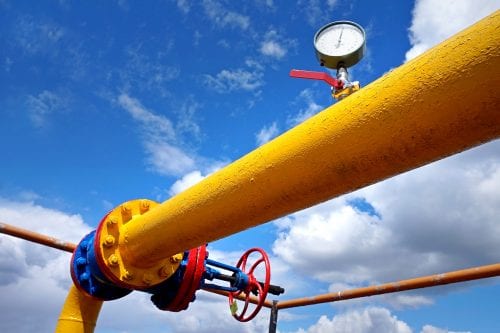Have you ever tried to evaluate hydrogen sulfide (H2S) scavenger effectiveness and had a hard time transferring the gas sample to your laboratory? Had to start field testing H2S scavengers without a reliable laboratory result? Or wanted to determine whether your scavenger is losing effectiveness?
Evaluating H2S scavengers can present many challenges to the natural gas industry. The team at Lipesa, a ChemTreat-affiliated company, has developed a reliable new field method for comparing the efficiency of scavengers in hydrogen sulfide removal.
The method consists of connecting to a natural gas line at the scrubber outlet after the gas pressure has been reduced to less than 250 psig. From there, use a fine pressure control valve (needle valve) to lower the pressure to less than 50 psig so the gas can move through a container where a solution of the scavenger to be tested has been placed. You can then measure the H2S content in the gas with and without product.
This method will help you:
- Evaluate scavengers directly in the field without having to take samples and transfer them to a laboratory. This eliminates the risks associated with transporting pressurized vessels and the possibility of H2S loss during the transfer.
- Perform field tests with the knowledge that you have selected the best product for your application without needing to spend large sums of product and money on evaluation.
- Verify the scavenger currently used in your facility has maintained its efficiency.
This testing method will allow natural gas plant operators to verify which H2S scavengers work best for their system needs. Please contact us to learn more. For more information regarding our offerings for the oil and gas industry, click here.
Container used to measure H2S content in the gas
Please contact ChemTreat for assistance in designing a treatment program customized for your application. Like all other technologies, due diligence is necessary to determine the feasibility for utilizing methods. Always consult your equipment manuals and guides.


